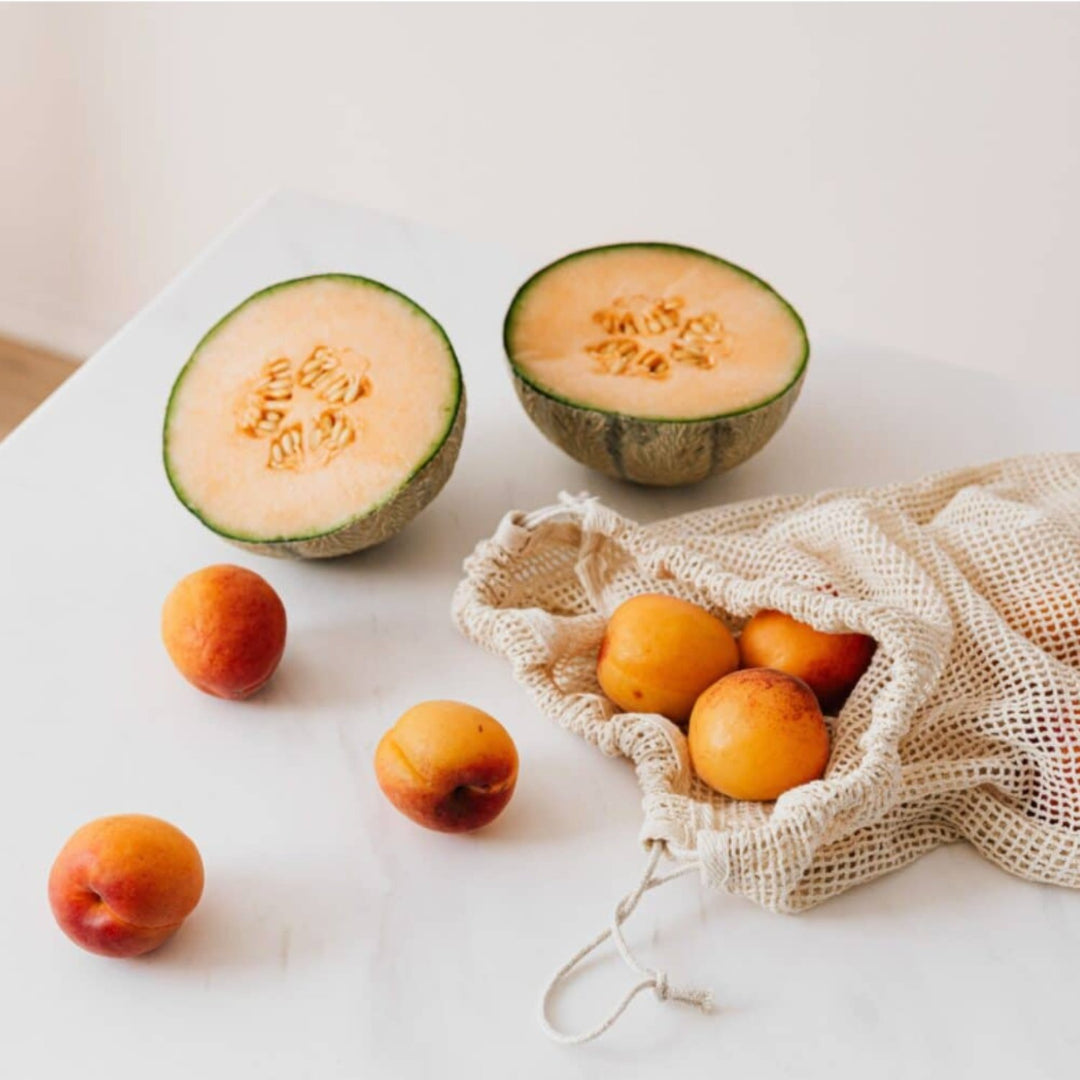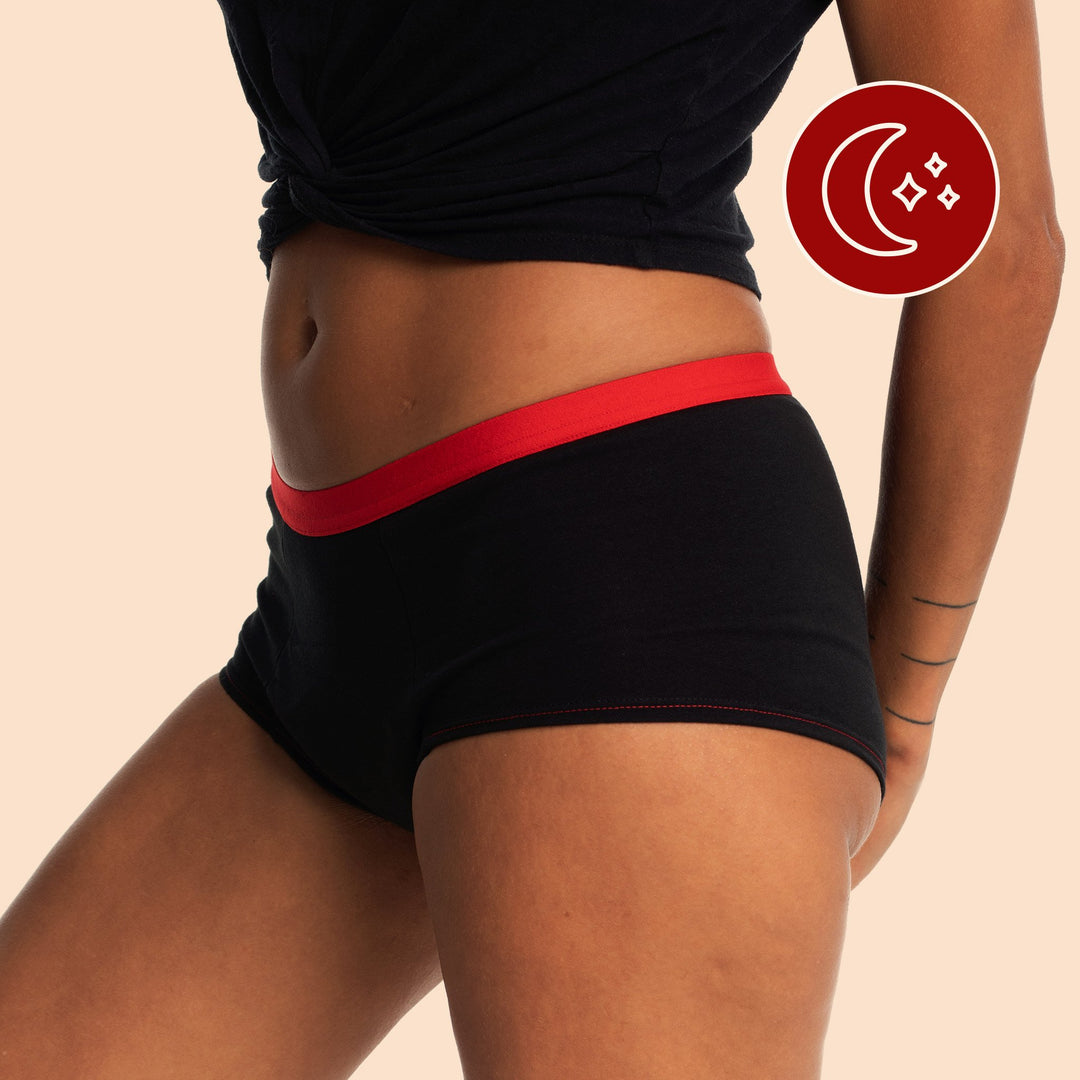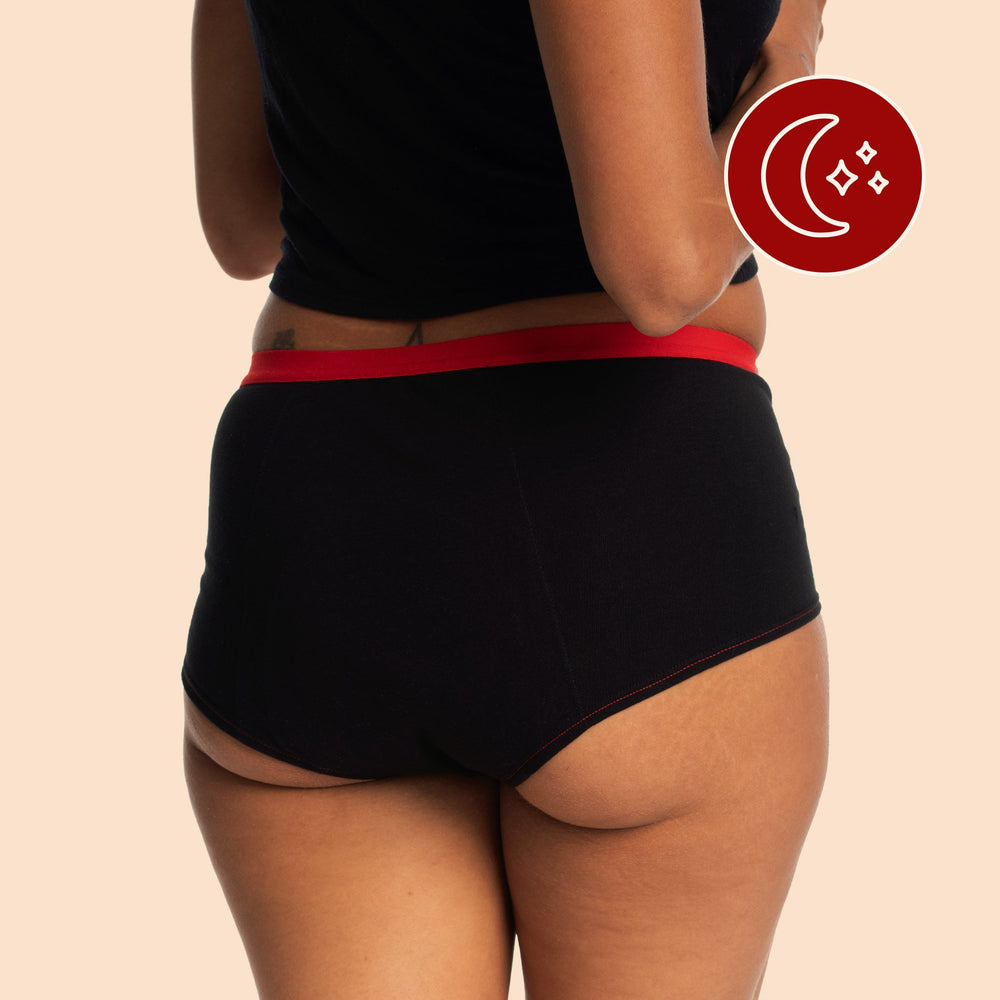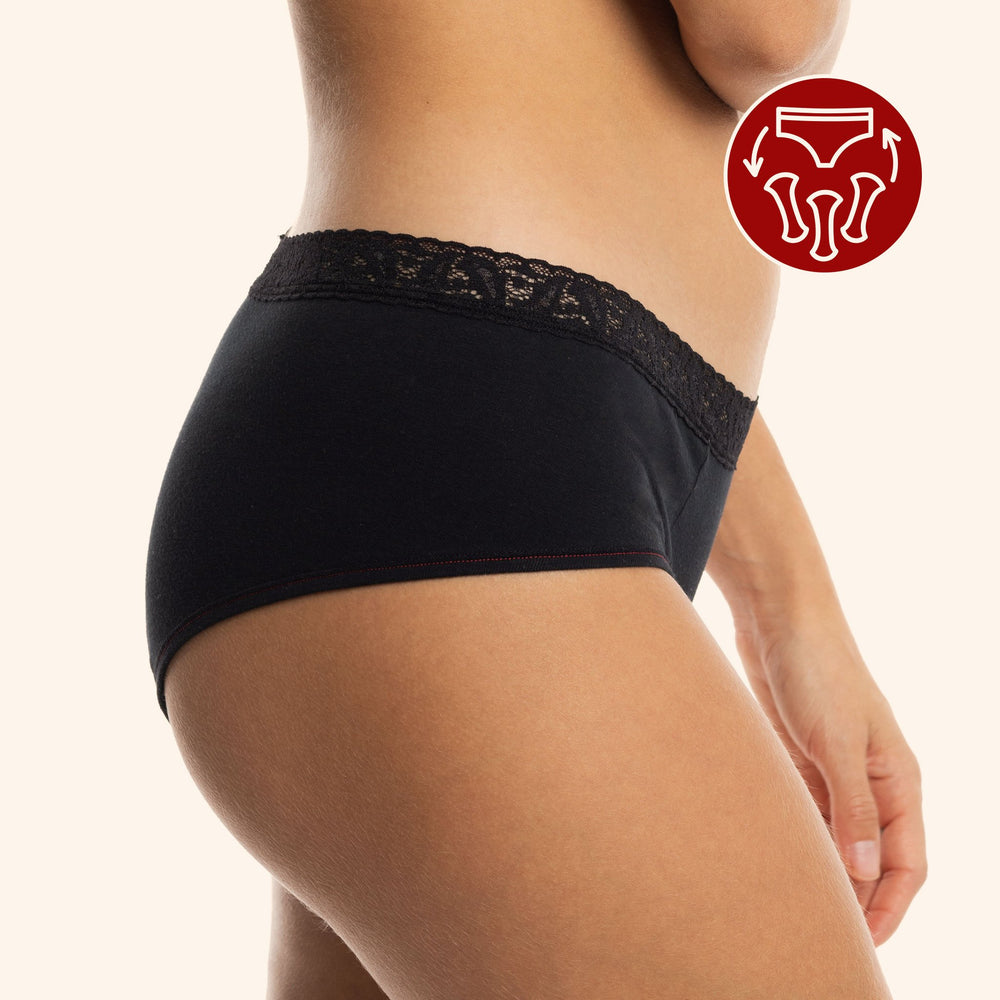
Of course, the path to women’s emancipation has not yet reached its destination. But it’s inspiring to remember the key moments that brought us closer to it, not to mention the women who were its face (and uterus!). Look back to better move forward.
In this month of women’s rights,we feel called to close our eyes and let ourselves be carried away by an immense wave of gratitude for all the women who’ve walked the path of emancipation before us.
Thanks to them, our existence is not only a little sweeter, it’s above all recognized.
I see these women as torchbearers who’ve shed a little light on our daily lives so that our nights are less alone. I see them as badasseswho, despite the clergy, patriarchy, or any system that curbed their desires, refused to remain silent, in the name of all.
It’s through demonstrations, speeches, great firsts, and small victories that our emancipation has made progress. This emancipation, it wears the colours of all the witches who came before us, Indigenous women, Black women, women of the LGBTQ+ community, all women. In their greatness and uniqueness.
In this month of women’s rights, I present 12 key moments that have marked the history of women’s emancipation in Quebec and, more broadly, in Canada. Why 12? Well, we wanted to do 10, but in the end, there were too many inspiring events! Okay, let’s explore the path of our mothers and grandmothers, who bequeathed us a world a little more just and humane.
1. The right to be…people!
And yes! Before 1929, women weren’t considered “persons” in the eyes of the law. Started from the bottom, now we’re here!
One morning, 5 female activists got up and gathered over a cup of tea to talk about this aberrance. They launched a legal challenge contesting the far-too-narrow definition of a “person” in Canadian law.
The Supreme Court ruled that the word “person” excluded women, but the activists refused to give up, and they took their case to Canada’s highest court at the time.
And they won.
Thanks to the passion of these women: Emily Murphy, Nellie McClung, Louise McKinney, Irene Parlby, and Henrietta Muir Edward.They’re now known as the Famous Five. Because of them, we’re now able to make ourselves heard in places of power and start from somewhere.
*Note that Indigenous women and women of Asian origin were not yet included in this decision.

2. The right to vote: A symbol of equality
In 1940, Quebec women won the right to vote and the right to be elected at the provincial level, this after years of relentless struggle. If you weren’t leading things, you could at least vote for who would be. A good start!
Thérèse Casgrain and Idola Saint-Jean were the most fervent campaigners for the right to vote (thank you, thank you!). Idola’s words still resonate today: “Feminists don’t want women to ‘masculinize,’ they want feminine qualities to shine in politics.”
Often forgotten in Quebec history, it’s essential to point out that Indigenous women (and men for that matter) did not obtain the right to vote until 29 years later, in 1969.
Thank you to those women who fought not only out of a desire for political equality but also, and above all, to get governments to consider issues of equity and justice. Women’s right to vote opened the door to a much broader revolution.
3. The contraceptive pill: A tiny pill that paves the way for a bigger future
Not so long ago, contraception was a crime punishable by imprisonment. Crazy, eh?
It wasn’t until 1969 that contraception was decriminalized, as were therapeutic abortion and homosexuality. Hurrah!
Let’s take this opportunity to highlight a badass woman who defied the laws to advance the cause at high speed.
Renée Rowan,a journalist passionate about taboo subjects, published an article in La Revue Populaire entitled “Birth control: the joy of having a child when we wanted to.” I don’t know about you, but I would’ve liked to see the prime minister’s face when he sat down to give that a read. 😉

4. The right to abortion: (Re)taking power over our bodies
As mentioned above, therapeutic abortion was decriminalized in 1969, but only in cases where women’s health was at risk (and go figure that mental health didn’t count for much). It wasn’t until 1988 that abortion was fully decriminalized in Quebec.
These are women who’ve assumed the political and ideological leadership of this issue, including a group called the Committee for the Fight for Free Contraception and Abortion.
A moment of silence for this small nucleus of feminists who led the struggle while giving clandestine services in the shadows they could find. Because that’s how these procedures used to be done: out of sight and in absolute silence.
Another small (big) victory.
5. The end of the subordination of married women: Hello, we exist as full individuals!
That time seems so far gone, but it really wasn’t that long ago.
Prior to 1964, women could not have a bank account, sign contracts, or work in a profession separate from that of their husbands (!!!). Our grandmothers had a legal obligation to obey their husbands! The laws didn’t care that all of humanity passes through our wombs.
Fortunately, thanks to the influence of Claire Kirkland-Casgrain – the first woman appointed minister to the Quebec government – the famous Bill 16 was passed, which gave married women the legal capacity to simply…exist!
6. The 1970s: Women’s voices echo in the arts
Art’s a powerful medium of expression, and women made it an extension of their bodies and bubbling ideas in the 1970s. This period was marked by a collective artistic effervescence depicted in cinema, theatre, visual arts, music, and writing.

7. The first lesbian bar in Montreal: Having fun without being harassed
That headline might sound a little trivial, but women’s emancipation is rooted in small stuff like this. In 1973, the first bar exclusively for lesbians was created in Montreal: the Baby Face Disco. The owner, Denise Cassidy, had the vision of a space where women could feel safe and free to have fun without worries.
In those years, the lesbian movement and, more broadly, the LGBTQ+ movement gained momentum and began breathing fresh air.
8. Indigenous women take ownership of the feminist struggle, step by step
Have you ever heard of the Oka Native Women’s March in Ottawa in 1979?
They marched 110 miles to chant their anger at the conditions on reserves and denounce the discriminatory nature of the Indian Act.
Their heavy footsteps traced 110 years of injustice through the streets, leaving a deep mark in the process. So that no one could ignore it anymore.
This march was a turning point in the history of Indigenous women, since it was not organized by an official association but by a gang of women who felt that the persecution had gone on long enough. They had already raised the issue widely in the privacy of their kitchens, and they were now bringing the debate to light in the public space.
9. The legalization of the practice of midwives: A victory to humanize childbirth
In 1998, the Quebec government legalized midwifery!
Thank you, government, but the real credit goes to all those women who took part in the fight for the recognition of this profession. So that we could reclaim birth, which carries a deep meaning in the lives of many women.
Midwife Isabelle Brabant was an important figure in the movement. Her vision was vibrant; she wanted to restore the beauty of childbirth by making a more human approach accessible. She’s since assisted hundreds of women and couples, honouring the incredible courage of women and the creativity of spouses. After all, pregnancy is directly about women’s rights over their bodies!

10. The election of the first Black woman as a member of a provincial parliament
“Being Black and being a woman in a society that is both racist and sexist means that you have no choice but to stand up and fight.” – Rosemary Wedderburn Brown
Rosemary Wedderburn Brown is not only the first Black woman elected to a provincial legislature in Canada, she’s also the first woman to run for the leadership of the NDP, with the slogan “Brown is Beautiful.”
This convinced and convincing feminist stood up for intersectionality, even before that word was in vogue! During her 14 years as a member of parliament and throughout her life, she helped break down racial barriers in the political space and strongly inspired Black feminism in Canada.
11. The first organization for trans people in Quebec: Helping diversity emerge
Imagine being a trans woman about fifty years ago. The struggle for trans people’s rights is still ongoing, but their realities were once completely invisibilized.
Fortunately, Marie-Marcelle Godbout was on Earth at that time. It’s thanks to her that the first major organization for trans people in Quebec was created in 1980, the Aide aux Trans du Québec (ATQ).
This organization has filled many important gaps, providing valuable support, information, and care to trans people.
Marie-Marcelle is so busy that she has set up a 24/7 helpline in her own home!
There’s a reason why she’s also called the Mother Teresa of trans people!
12. Bringing emancipation into space
Some women are so incredible that they bring emancipation into outer space!
In 1992, Roberta Bondar was the first Canadian woman to travel in space (and beyond!).
In 1999, it was the turn of Julie Payette, the first Quebec woman to visit the International Space Station.
I mean, YES! We’re quietly taking our place in the face of patriarchy, but in the meantime, we’ll sow seeds in the broader universe, literally.
***
In light of this magnificent path travelled, my eyes are full of stars for the future.
As Monic Néron and Émilie Perreault say so well, the future belongs to us (If you missed our segment on this wonderful show, you can listen to it again here).). I don’t have a ready-made solution to overthrow the patriarchy, but I believe that if we continue to shine like this, it’ll eventually melt under the rays of our feminine power.
Small steps to keep us headed in the right direction→
- Inclusiveness: Remembering that women’s rights are the rights of all women. We’re such a beautiful, colourful, and diverse community, and this must be our struggle. It’s therefore essential to recognize our privileges, to honour them, and to use them in a luminous way.
- Always continue to educate yourself: Perpetually awaken our consciousness to the various realities that exist. Learn, grow, make mistakes, and learn again. Always do better.
- Stronger together: The path to women’s emancipation is a path on which all of humanity walks. So to the men reading this, I ask you to dare! Dare to address these issues among yourselves, and with us. For example, if we can talk about menstruation openly and without finding it disgusting or uncomfortable, we’re off to a good start!
Wishing you a spring renaissance of the sweetest and most vibrant love, punctuated by the songs of birds and the sweet melody of the advancement of our rights.
Sources
- À babord! Social and political review, Le droit à l’avortement, une lutte exemplaire: Un entretien avec Louise Desmarais, 2008. https://www.ababord.org/Le-droit-a-l-avortement-une-lutte.
- Archives gaies du Québec, Histoires des communautés LGBTQ2S+ du Québec. http://agq.qc.ca/histoire-des-communautes-lgbtq2s-du-quebec/.
- Archives Révolutionnaires, Un siècle de luttes LGBTQ+ au « Québec », 2020. https://archivesrevolutionnaires.com/2020/01/07/un-siecle-de-lutte-lgbtq-au-quebec/.
- Condition féminine Canada, Journée de l’affaire « personne », 2020. https://cfc-swc.gc.ca/commemoration/whm-mhf/persons-personne-fr.html.
- Femmes autochtones du Québec, À propos: Historique. https://www.faq-qnw.org/a-propos/.
- Kathleen Newman-Bremang (Refinery29), The Incredible Black Canadian Women You Should Know, 2021. https://www.refinery29.com/en-us/2021/02/10286036/black-history-month-canadian-women#slide-11.
- L’Encyclopédie canadienne, Droit de vote des femmes au Canada, 2021. https://www.thecanadianencyclopedia.ca/fr/article/droit-de-vote-des-femmes-2.
- L’Encyclopédie canadienne, Noires et militantes pour la liberté, 2018. https://www.thecanadianencyclopedia.ca/fr/article/noires-et-militantes-pour-la-liberte.
- Marilyse Hamelin (Gazette des Femmes), Journée internationale des droits des femmes : regard sur le mouvement féministe, 2019. https://gazettedesfemmes.ca/14750/ou-en-est-le-feminisme-quebecois%E2%80%89/.
- Radio-Canada, Le métier de sage-femme, dans la marge depuis des générations, 2019. https://ici.radio-canada.ca/nouvelle/1098878/sage-femme-quebec-canada-formation-legislation-archives.
- Radio-Canada, Une petite pilule, une grande révolution, 2020. https://ici.radio-canada.ca/nouvelle/1652105/pilule-contraception-femme-planification-familiale-archives.
- Raphaëlle Corbeil (Gazette des Femmes), L’histoire du féminisme est récente. Et les moments qui l’ont marqué font constater à quel point on part de loin!, 2016. https://gazettedesfemmes.ca/13421/20-moments-marquants-de-lhistoire-du-feminisme/.
- Réseau québécois en études féministes (RéQEF), Ligne du temps de l’histoire des femmes au Québec. https://histoiredesfemmes.quebec/lignedutemps.html#350.
- SALVAS (@s.a.l.v.a.s). https://www.instagram.com/s.a.l.v.a.s/?hl=fr-ca.
- Sophie Malavoy (Gazette des Femmes), La longue marche des femmes, 2000. https://gazettedesfemmes.ca/4511/la-longue-marche-des-femmes-au-quebec/.
























